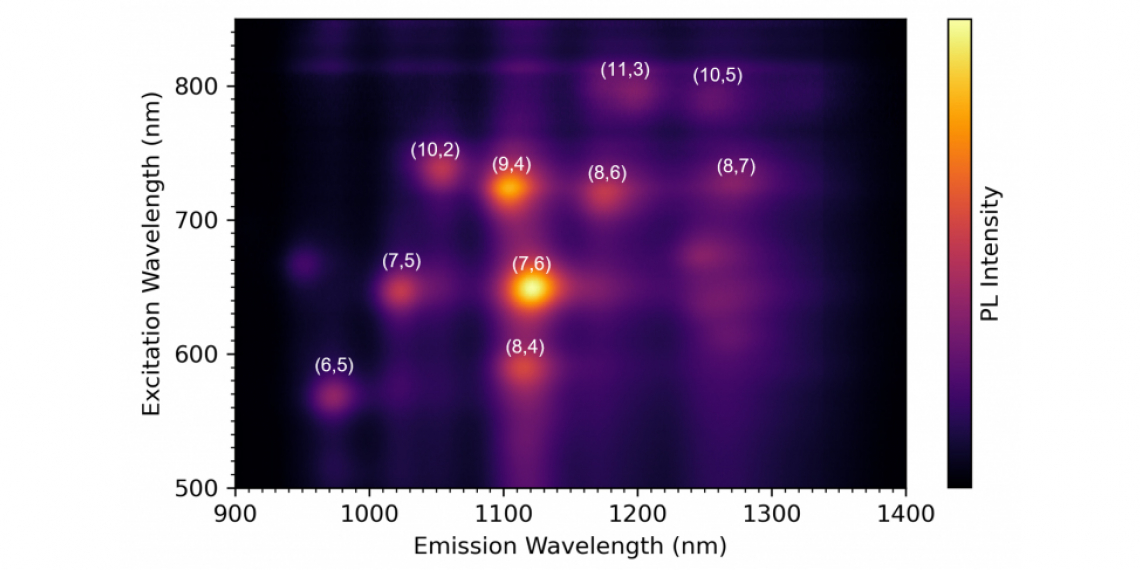
Single-wall carbon nanotubes (SWCNTs) have unique electrical, thermal, mechanical and optical properties which make them attractive for a wide variety of applications; ranging from drug delivery to battery electrodes. SWCNTs can be envisaged as a graphene layer that has been rolled up into a cylinder with different tube structures possible depending on how the graphene layer is rolled. The tube diameter and chirality (orientation of the graphene lattice with respect to the tube axis) are defined by the roll-up vector. The roll-up vector magnitude and angle are described by a pair of integers (n, m) called the chiral index.
SWCNTs are interesting because their electronic properties heavily depend on the chiral index of the tube structure. SWCNTs with different chiral indexes exhibit metallic and semiconducting properties, with the bandgap varying with chiral index. This gives SWCNTs a wealth of tunability and their properties can be tailored to specific applications. Many SWCNT synthesis methods result in a mixture of chiral structures and identifying the chiral structures present in a synthesised sample is therefore vital. One of the most powerful methods for SWCNT identification is photoluminescence spectroscopy. In this application note, the FLS1000 photoluminescence spectrometer equipped with an InGaAs NIR camera is used to identify the chiral indexes present in a SWCNT sample using excitation emission matrix spectroscopy.

